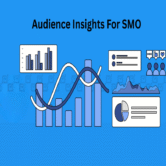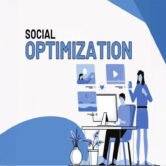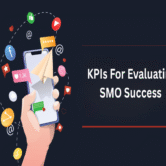
Explain remarketing strategies via social media platforms
Introduction
Remarketing is a powerful digital marketing technique that enables businesses to re-engage users who have previously interacted with their brand but did not complete a desired action. In the context of social media platforms, remarketing allows brands to strategically reconnect with potential customers through targeted ads based on their past behavior. Whether someone visited a product page, abandoned a cart, or engaged with a social post, remarketing keeps the brand top-of-mind and encourages return visits and conversions. With the data-rich environment of social platforms like Facebook, Instagram, LinkedIn, and X (formerly Twitter), remarketing has become a cornerstone of performance-driven social media strategies.
Understanding social media remarketing
Social media remarketing is the process of serving tailored ads to users who have previously interacted with your brand on social channels or websites. This is accomplished through tracking pixels or custom audience tools provided by platforms. The main objective is to move users down the conversion funnel by presenting them with relevant messages that address their earlier actions or interests. These ads can be highly personalized, showcasing specific products or offers users viewed or encouraging them to revisit a service page they explored.
Building custom audiences
The foundation of effective remarketing lies in audience segmentation. Most social platforms offer tools to create custom audiences based on behaviors. For example, Facebook allows advertisers to create audiences from website visitors, video viewers, or users who engaged with a post or page. Similarly, LinkedIn lets businesses remarket to people who visited a company profile or clicked on an ad. These custom audiences allow for precise targeting and message personalization, significantly increasing the chances of re-engagement and conversion.
Pixel integration and data tracking
Pixels are snippets of code embedded into a website that collect visitor behavior data. When someone visits a webpage or performs an action such as adding a product to a cart, the pixel captures this event and links it to their social profile, enabling future remarketing. Facebook Pixel and LinkedIn Insight Tag are examples of such tools. These data points allow marketers to build behavioral segments and craft remarketing ads that align perfectly with users’ interests and intent levels.
Dynamic product ads
One of the most effective remarketing strategies is using dynamic product ads (DPAs). These ads automatically showcase products a user has browsed or added to their cart, pulling from a business’s product catalog. Facebook and Instagram support dynamic ads that adjust content based on user behavior, offering a personalized experience at scale. These ads are especially useful in e-commerce where abandoned cart reminders or product interest follow-ups can lead to high conversion rates.
Content sequencing and storytelling
Remarketing doesn’t always have to be about sales; it can also be used to tell a brand story over time. Content sequencing involves showing a series of ads to the same user in a specific order. For instance, a brand may first show an awareness video, then follow up with product benefits, and finally display a call-to-action or limited-time offer. Platforms like Meta allow advertisers to set up such sequences, ensuring users receive contextual messaging that nurtures trust and boosts conversion readiness.
Lookalike audience expansion
Once a remarketing campaign identifies high-converting users, social platforms can help expand reach through lookalike audiences. These are users who share similar characteristics or behaviors with the original remarketed audience. Facebook’s Lookalike Audiences or LinkedIn’s Similar Audiences allow brands to broaden their targeting while maintaining high relevance. This strategy ensures that remarketing insights also fuel the top-of-funnel efforts efficiently.
Cross-platform remarketing
In today’s fragmented digital landscape, users engage with content across multiple platforms. Successful remarketing strategies account for this behavior by synchronizing campaigns across channels. A user might browse a product on Instagram, then see a reminder ad on Facebook, and eventually click a conversion-focused ad on Messenger. Using integrated ad managers and shared pixels, brands can orchestrate a seamless cross-platform experience that reinforces messaging and drives action.
A/B testing for creative optimization
Effective remarketing requires constant testing and refinement. Marketers should run A/B tests on different ad creatives, formats, copy styles, and calls-to-action to determine what resonates best with remarketed audiences. Social platforms provide performance metrics such as click-through rates, engagement rates, and conversion rates to assess effectiveness. Iterative testing ensures that ads remain fresh and relevant, avoiding audience fatigue and boosting ROI.
Frequency capping and user fatigue management
While remarketing is powerful, overexposing users to the same ads can lead to annoyance and reduced effectiveness. Frequency capping allows marketers to limit the number of times an ad is shown to the same user within a given time frame. Most social platforms offer this feature to maintain user goodwill and ensure a positive brand impression. Balanced frequency ensures that the audience is reminded without feeling overwhelmed or stalked.
Measuring performance and attribution
Evaluating the success of a remarketing strategy involves tracking a variety of metrics. These include conversion rates, cost per conversion, return on ad spend (ROAS), and engagement levels. Attribution models help determine how much of a conversion credit belongs to a remarketing touchpoint. With robust analytics tools such as Facebook Ads Manager or Google Analytics, marketers can dissect the user journey, fine-tune budget allocations, and optimize future remarketing strategies.
Conclusion
Remarketing via social media platforms is an essential tactic in the modern marketer’s toolkit. It allows businesses to capitalize on previous user interest, offering them timely and relevant messages that drive them closer to conversion. By leveraging platform tools, dynamic content, behavioral insights, and continuous testing, brands can create highly effective campaigns that not only re-engage lost visitors but also amplify overall marketing performance. When used strategically, social media remarketing bridges the gap between user intent and brand action, delivering measurable results and lasting engagement.
Hashtags
#socialmediaremarketing #remarketingstrategy #customaudiences #socialmediamarketing #digitaladvertising #pixeltracking #facebookads #linkedinads #dynamicads #contentsequencing #socialretargeting #audiencetargeting #conversionmarketing #socialmediacampaigns #crossplatformads #lookalikeaudiences #remarketingtips #adoptimization #ecommerceads #userretargeting #brandrecall #socialpixel #audiencereengagement #remarketinggoals #socialstrategy





